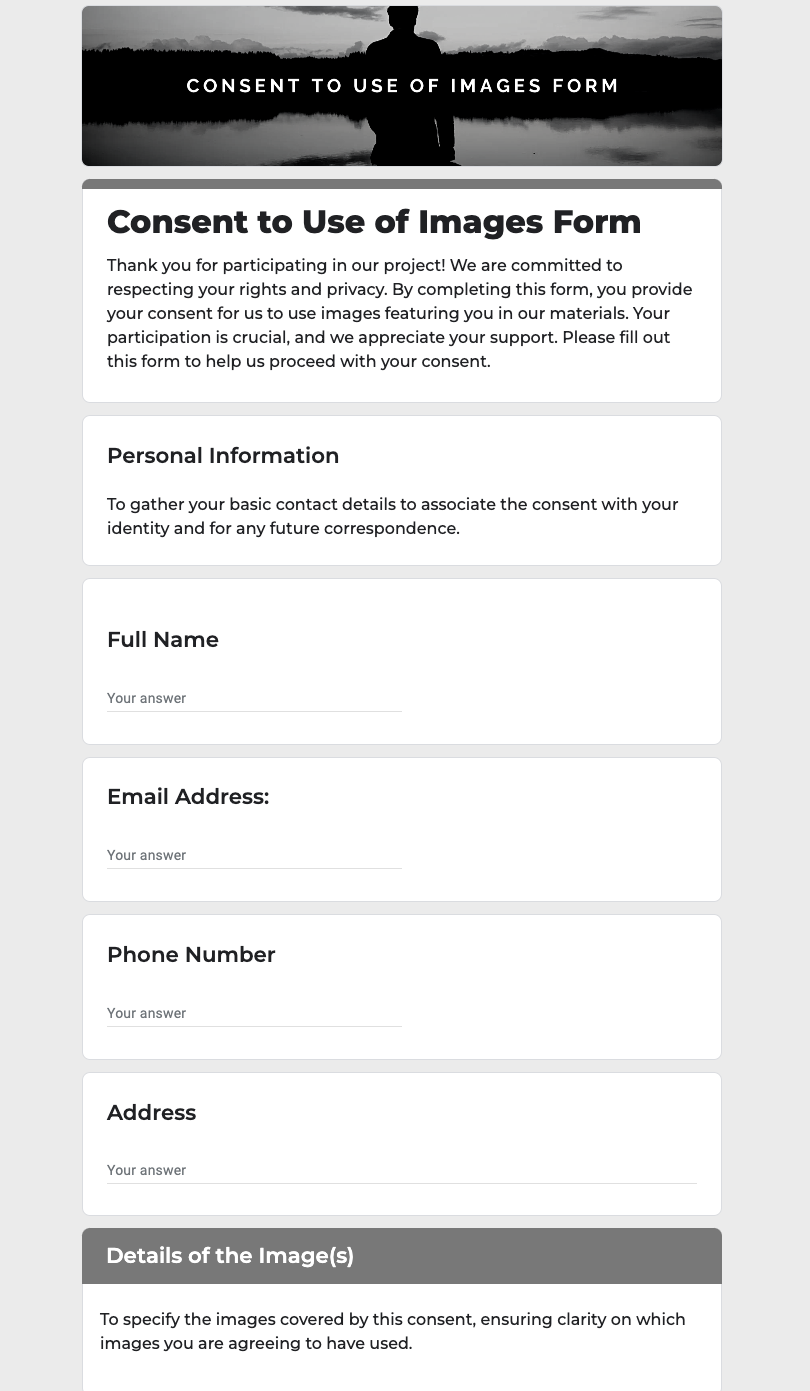Consent to Use of Images Form
FREE
A Consent to Use of Images Form provides a simple and clear way to secure permission from individuals before using their photos for any purpose. This form protects both parties by outlining the rights and restrictions related to the images, ensuring that everyone is on the same page. Using this form helps you avoid legal issues, maintain transparency, and build trust with your audience, making it an essential tool for anyone involved in photography, media, or marketing. By using this form, you can confidently showcase your work while respecting the privacy and preferences of those involved.



